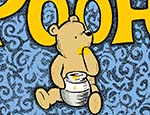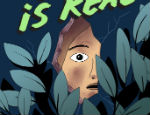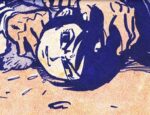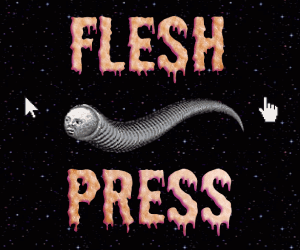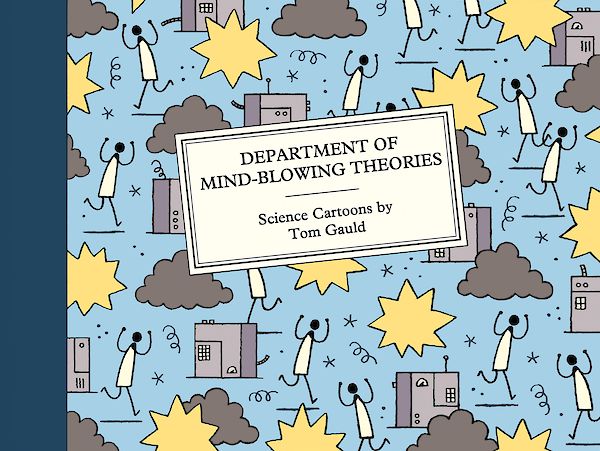
In a world struggling not just with a pandemic but a general aversion towards the cultivation of a scientific temperament, the presence of a new book by Tom Gauld seems particularly satisfying. The Scottish cartoonist has long brought his fiercely intelligent humour to bear upon topics like religion and literature, and now turns his skewering gaze upon science and scientists.
Gauld’s Department of Mind-Blowing Theories is a collection of single-panel cartoons originally created for New Scientist magazine, hence the laboratory settings and nods to Charles Darwin. It isn’t always an easy read, given the allusions and layers of meaning, but it is also what fans familiar with his earlier work have come to expect. In this, he manages to evoke the spirit of Gary Larson who, with his legendary strip The Far Side, has long walked the tightrope of making something seem simultaneously sombre and hilarious.
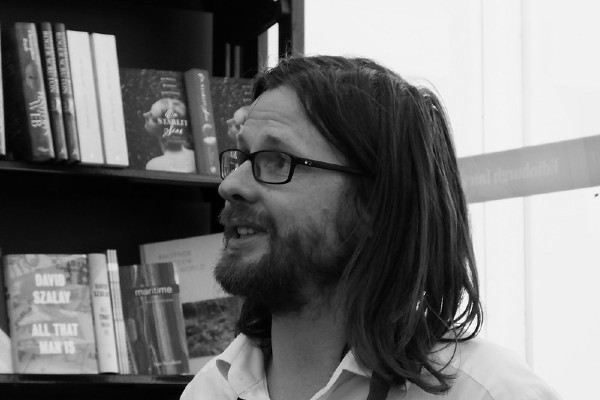
Photo credit: Joe Gordon
Self-quarantined on opposite sides of the planet, we conducted an interview Gauld via email. Here are his responses:
BROKEN FRONTIER: The blurb for your book refers to how it is funny enough to engage any layperson, but that isn’t strictly true. Do you feel as if you have to consciously dumb things down given the times we live in, where intelligence is almost perceived as a threat, at least in North America?
TOM GAULD: I find that to make almost all my cartoons, I have to make a judgement about the audience’s knowledge of a subject, in order to play with, or subvert their knowledge and expectations. With the science cartoons I use myself as a kind of base-level because I’m somebody who is fascinated by, but almost completely uneducated in, science. In fact with all my work I’m aiming to make something that would interest me (if I wasn’t the one making it) in the hope that I’m a reasonably normal person so there will be lots of others a bit like me.
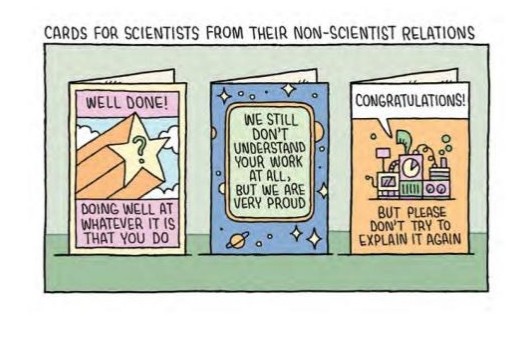
In the end though, you can’t please everyone, and I’d rather make the occasional weird cartoon that leaves people a bit confused, than consciously dumb them down. The sort of readers that I’m quite happy to lose are the ones who feel personally affronted by a joke that they don’t get.
BF: A video on YouTube features you talking about drawing as language. Given that Department of Mind-Blowing Theories focuses largely on scientists, I was wondering if any of them have shared how they perceive cartoons, and if their views coincide with your own in any way?
GAULD: I was quite worried when I started making these cartoons for New Scientist, that I’d enrage the scientists with my simpleton ways and they’d chase me out of Sciencetown with pitchforks and flaming torches (like a Gary Larson cartoon). But I was completely wrong and they have been very welcoming, I think partly because my admiration for scientists comes across in the strips, even the ones where I’m teasing them.
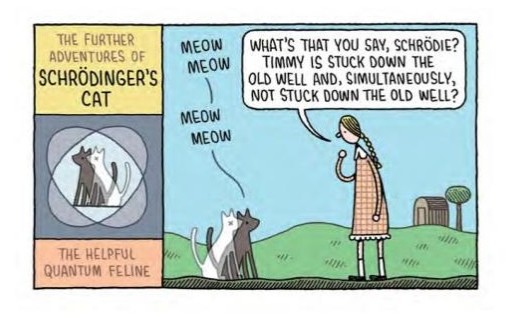
I did one cartoon about the LHC at Cern in which I made two typos and an error. What I loved about the reaction from many of the scientists was that they politely corrected me, but also offered other suggestions, facts and stories about Cern, and annotated versions of the cartoon with a geeky enthusiasm. The version in the book is a corrected, peer-reviewed version of the cartoon.
Nothing makes me happier than scientists getting in touch to ask to show one of my silly jokes in their erudite lecture or PhD.
BF: One of your strips features Facebook users debunking Darwin’s On the Origin of Species (“LOL! Totally Fake”). It’s funny, but also worrying true. Have you ever been trolled online for work you have done, by people who just didn’t get it?
GAULD: I have one particular cartoon which was originally done for the Guardian called “our blessed homeland” that seems to be a magnet for a number of different types of angry people online.
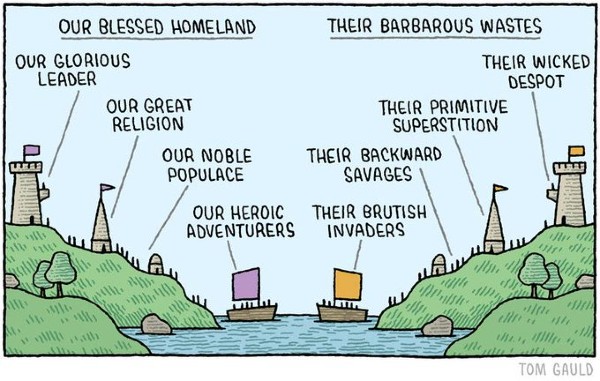
It gets dumb grammar pedants saying that I have used “their” incorrectly (I haven’t). It gets people commenting “so you’re saying that the US and North Korea are exactly the same” (I don’t think it says that). And it got posted on a white-nationalist message board where they ranted about it for pages and pages and called me and the academic who posted it ‘cat ladies’.
I think there’s probably a Godwin’s Law sort of rule for the number of comments that need to appear below a cartoon before a bloke posts “don’t get it”. That same bloke would probably also be furious that I mentioned Godwin’s Law here without explaining what it is and might even spend more time commenting on this than it would take to google Godwin’s law.
BF: You have mentioned Chris Ware as one of your ‘cartooning heroes’ in the past. Is that an indication of what you look for when you pick up the work of, say, a lesser-known cartoonist?
GAULD: Not really, Chris Ware has always inspired me, but he’s a one-off doing very much his own thing. I think a book like Rusty Brown would have been a complete disaster in anyone else’s hands. Though now I write that, I suppose that is partly what I’m looking for: work that very much feels like it could only have come from that one person. I’m thinking now of Edward Steed and Liana Finck who both make work that fits in the ‘New Yorker Cartoon’ box, but do it totally in their own way, which I love.
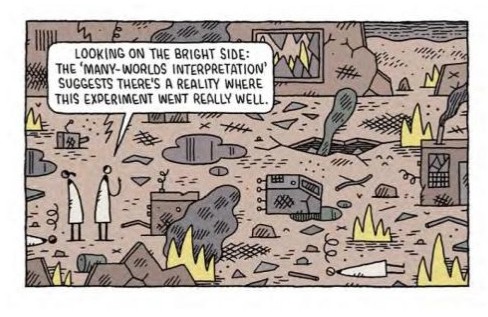
BF: Would you agree or disagree that the use of ‘white space’ is underrated in a panel? I ask because so much of your work involves the interplay of witty dialogue with very little action.
GAULD: For me, one of the most interesting parts of making comics is the way you can play with timing, guiding the reader’s eyes over text and image to make things happen in their brain in a certain order and rhythm. White spaces, pauses and repetitions are all things I like to put into the cartoons: I’d actually like to use more of them in my two weekly cartoons, but the space I get on the page is, in both cases, quite small. I think that, done right, less is more, but there comes a point when you have too much white space or pausing and then less is just less.
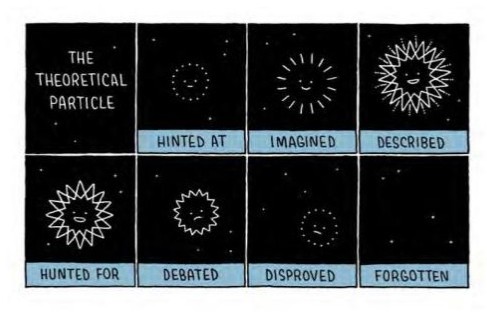
BF: You wrote a dissertation on the work of Ben Katchor, who was once described as the creator of the “last great American comic strip.” Do you believe that particular medium is past its prime when newspapers themselves appear to be dying?
GAULD: What I like about newspaper comic strips is that they sneak into the consciousness of people who might otherwise never read comics. And even the comic fans who are reading the newspaper are in a different mind-set than when they sit down to specifically read a whole comic. When I make the cartoons, I am thinking about how they will sit on the page next to all the non-comics content. In a way, my comics do a similar thing on Instagram and Twitter, popping up in a feed full of other things, but I still love seeing my work printed on paper in a newspaper or magazine.
I suppose with fewer newspapers, commissioning fewer strips reduces the likelihood of a great one coming along. But art is more complicated than a calculation like that, so who knows? Maybe something amazing will appear next week.
Tom Gauld’s Department of Mind-Blowing Theories is published by Drawn & Quarterly in North America and Canongate in the the UK in April.
Interview by Lindsay Pereira






